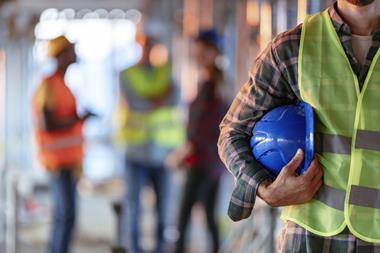Health and safety regulations are under the microscope more than ever before, but significant global differences remain
The COVID-19 pandemic has shed light on health and safety measures around the globe. Needless to say, some countries have proved to be much more prepared, and their approach has paid off tenfold.
Different regions have different standards when it comes to health and safety in the workplace. The recent shipment of PPE that landed in the UK from Turkey is a stark reminder of this — some 400,000 surgical gowns that were ordered from Turkey fell short of British safety standards.
This is why there are independent organisations at work who can certify health and safety procedures on an international basis. Here is a closer look at which countries are taking progressive measures to protect their workers, and what regulations every country must adhere to.
The UK
In the UK, the term ‘health and safety gone mad’ has grown in popularity. Although often said with a roll of the eyes, it reflects the UK’s positive health and safety record. In 2016, the UK standardised rate of injuries in the workplace was 0.53 per 100,0000 employees. This figure is among the lowest in Europe — even other large economies such as France, Germany, and Spain encounter a higher rate of workplace injuries.
UK OSH (Occupational Safety and Health) legislation is largely built from the foundations of the Health and Safety Work Act of 1974. In essence, this law is based upon the principle that “those who create risks for employees or others in the course of carrying out work activities are responsible for controlling those risks.”.
We can certainly see that last sentiment reflected in the response to the COVID-19 outbreak in the UK, in which a lot of discrepancy has been left with individual employers (or ‘those who create the risk’), who have made adjustments to working practices or gone on to require their workforce to stay at home.
Apart from this, much of the UK’s legislation is based upon European directives, such as the Management of Health and Safety at Work Regulations. These European regulations require companies to “evaluate, avoid, and reduce workplace risks”.
Germany
Germany is another European country often celebrated for its strong health and safety record. According to HSE, Germany was one of the countries with the fewest workplace injuries in 2016: 0.63 per 100,000 employees. In this particular year, only Cyprus, the UK, and Sweden, had a better record.
There are currently initiatives in place in Germany that aim to “modernise the German occupational health and safety system”, such as the Joint German Occupational Safety and Health Strategy (GDA). The GDA offers employers incentives to strengthen workplace health and safety in order to put the control in the hands of individual companies (in a similar way to the UK). More specifically, and in a clear attempt to make sure individuals take responsibility, Germany’s occupational health and safety legislation imposes specific responsibilities on directors in parallel to those imposed on companies.
Recently, Germany has updated existing OSH regulations in light of the Covid-19 outbreak. Their ‘COVID-19 Standard’ includes such regulations as:
- Workers must be at least 1.5 metres away from on another in the workplace
- Facemasks should be provided and worn when contact is unavoidable
- Tools and other equipment should be personal wherever possible — when shared, they should be cleaned thoroughly.
India
India’s health and safety record is substantially less impressive than that of many European countries. In 2017, it was reported that 48,000 workers in India die due to occupational accidents every year. However, their OSH health and safety measures are gradually improving as procedures for development have been put in place over the years.
India embarked upon an OSH development programme in 2012, which aims to “intervene and transform the existing state of OSH in both formal and informal sectors”. They have also introduced legislation outlining protection against particular hazards in order to strive towards a safer working environment.
The US
According to the Bureau of Labor Statistics, there were 2.8 million non-fatal workplace injuries and illnesses reported in the US in 2018 (a figure that remained unchanged from the previous year).
While regulations vary slightly from state to state, the overall approach to health and safety legislation is set by the Occupational Safety and Health Administration (OSHA), or specific OSHA-approved state plans. The overarching Act, which governs occupational health and safety in the US, is the Occupational Safety and Health Act (1970). In turn, the OSH Act allows each state to run their own OSH-approved programmes — 17 states currently have OSH plans.
One shortcoming of the OSH Act is that some employees fall through the gaps of the law, potentially jeopardising their safety. Miners, some transportation workers, many public employees, and the self-employed do not fall under this law’s jurisdiction.
A global approach
Despite the differences in OSH legislation in each country, some standards must be followed internationally, especially in certain high-risk occupational areas such as electro mechanical engineering, which lays out its own sets of legislation such as the current European harmonised ATEX standards. These are in place to ensure the safe operation of procedures such as electric motor rewinding.
According to the International Electrotechnical Commission, there are multiple globally recognised standards and certifications that can be used to prove compliance with global health and safety procedures. A voluntary system, the IECEx provides a means of proving this compliance, meaning that organisations can present their certification rather than having to undergo further testing.
In the age of the coronavirus, health and safety regulations are under the microscope more than ever before. In the coming years, it will certainly be interesting to see how each country adapts in the wake of the pandemic, and how international standards adapt the protect global citizens.
Mark Convery is EMS Sales Representative at Houghton International




















No comments yet